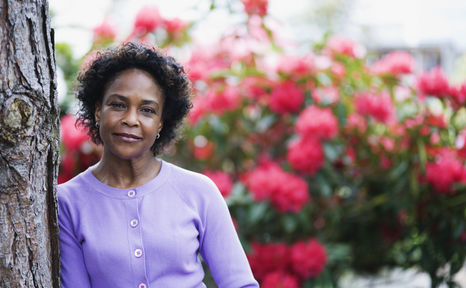

Women have a much greater risk for developing osteoarthritis. Here's why and how you can combat that risk.

Osteoarthritis is the most common form of arthritis. It occurs when joint cartilage wears and causes inflammation, pain, and stiffness, especially in the hip, knee, and thumb joints. According to the Centers for Disease Control and Prevention, an estimated 27 million people in the United States suffer from osteoarthritis, and 60 percent of these are women.
There are more men under the age of 55 that have osteoarthritis, but after 55, the number of women with the condition far surpasses the number of men. This medical phenomenon is largely due to three risk factors that are unique to women: biology, genetic predisposition, and hormones. Obesity is another risk factor, and statistics show that this health risk is on the rise for both men and women.
Osteoarthritis can be genetic and is known to run in families, especially on the matriarchal side. Women may find that if their mother had knobby fingers, they too will experience it around the same age as their mother.
Joints that are affected by osteoarthritis often vary by gender. Women tend to develop the chronic illness in their hands and knees, whereas men have it in the hips. Research has found that knee and hand osteoarthritis have a stronger genetic component than other parts of the body.
Because women are designed for childbirth, they have greater elasticity in their lower body in order to expand during pregnancy and delivery. “As a result, the joints probably move around a little more,” says Yusuf Yazici, MD, a rheumatologist at New York University Hospital for Joint Disease. This movement creates instability, and with less stability comes a higher risk for injury and inflammation.
Women’s hips are also wider than their knees, so their knees are not as well aligned as men’s. The alignment of the female hips and knees makes women more prone to knee problems, including knee osteoarthritis.
Cartilage is a smooth, flexible connective tissue that covers the joints in the body, preventing bone from rubbing directly on bone. Studies have suggested that hormones more prevalent in women affect cartilage. Estrogen, a prominent female hormone, protects the cartilage from inflammation. But after menopause, a woman’s production of estrogen decreases, leaving the cartilage vulnerable to inflammation.
Women are still at a greater risk for osteoarthritis after menopause even if they are taking hormone-replacement therapy (HBT). In fact, recent studies suggest that women who are using HBT before and after menopause have a significantly greater chance for hip or knee replacement surgery. However, those women who are on HBT before menopause may have higher numbers for joint replacement surgery because they are in more frequent contact with healthcare professionals and have better health care.
Research also shows that giving birth may increase a woman’s chances of osteoarthritis. Remarkably, after each birth, a woman’s risk of needing knee replacement surgery rises 8 percent, and there’s also a 2 percent greater chance of needing hip replacement surgery, according to one study.
Obesity plays a major role in osteoarthritis. According to the Arthritis Foundation, with every extra pound you gain, you add three pounds of pressure to your knees and six pounds of pressure to your hips. This shows how much pressure extra weight can put on your joints, causing cartilage to wear away more rapidly.
Women who have gone through menopause typically have more belly fat, which can also cause lower joint pain, Alexander Shikhman, MD, PhD, founder of the Institute of Specialized Medicine in Del Mar, Calif., tells Everyday Health.
These risk factors may seem scary, and some of them we simply can’t change. To curb the risk of osteoarthritis, focus on the things you can change, such as losing excess weight, exercising, and eating a healthy, plant-based diet. Women can be in contact with their doctors and alert them of signs of joint pain so intervention can start as soon as possible.
Fight Osteoarthritis with the Right Exercises
4 Steps to Healthy Living with Osteoarthritis
Treating Osteoarthritis Naturally
Copyright © www.orthopaedics.win Bone Health All Rights Reserved